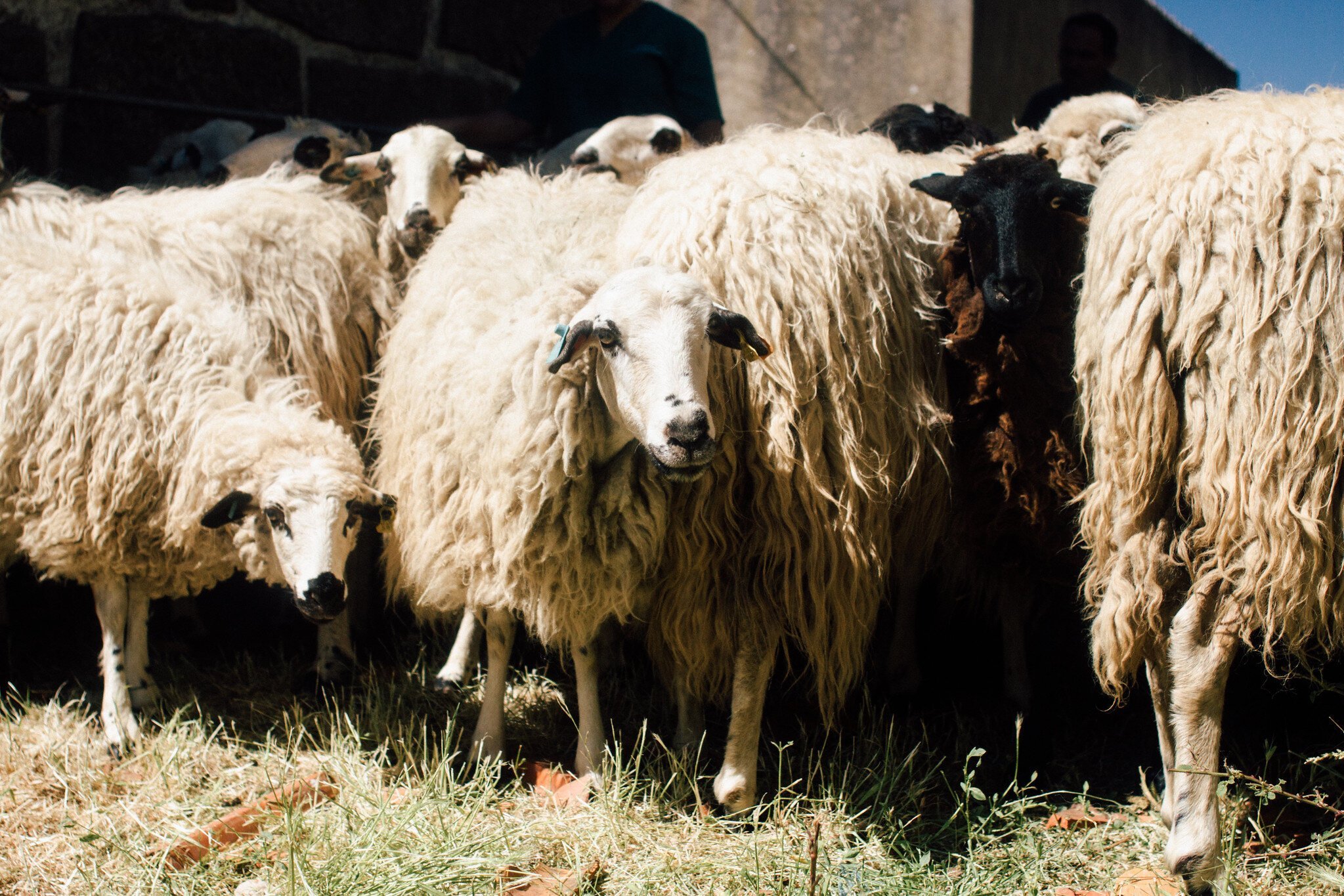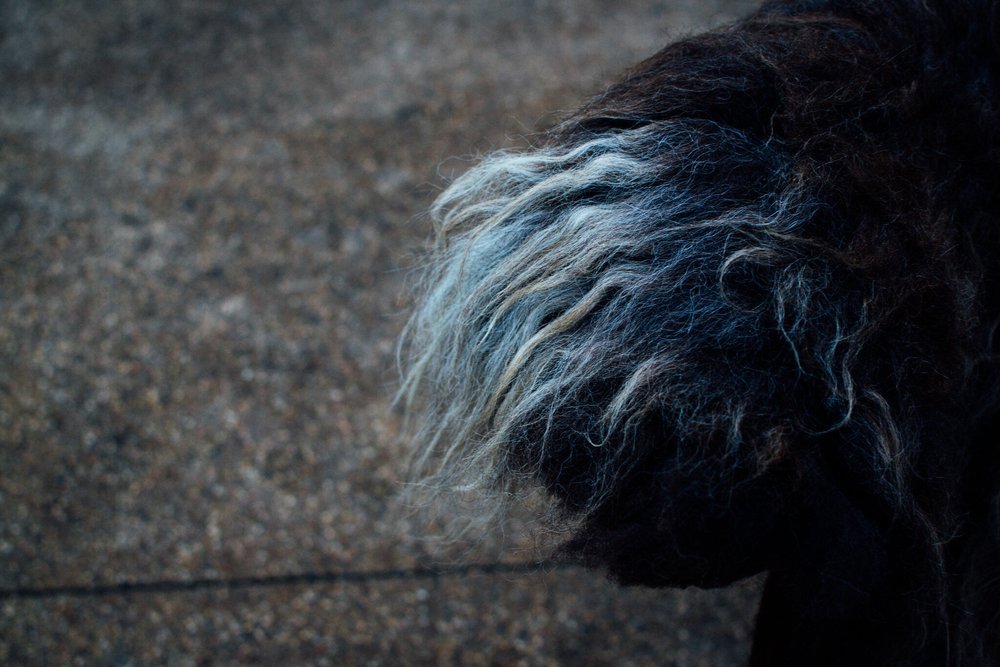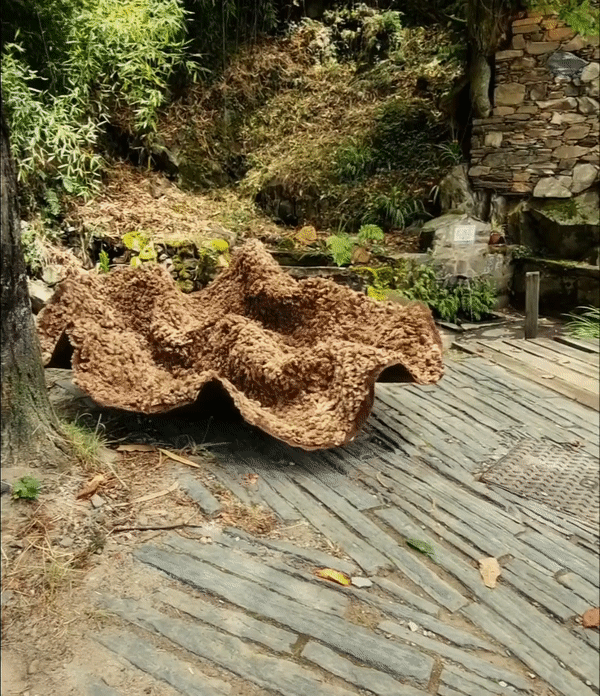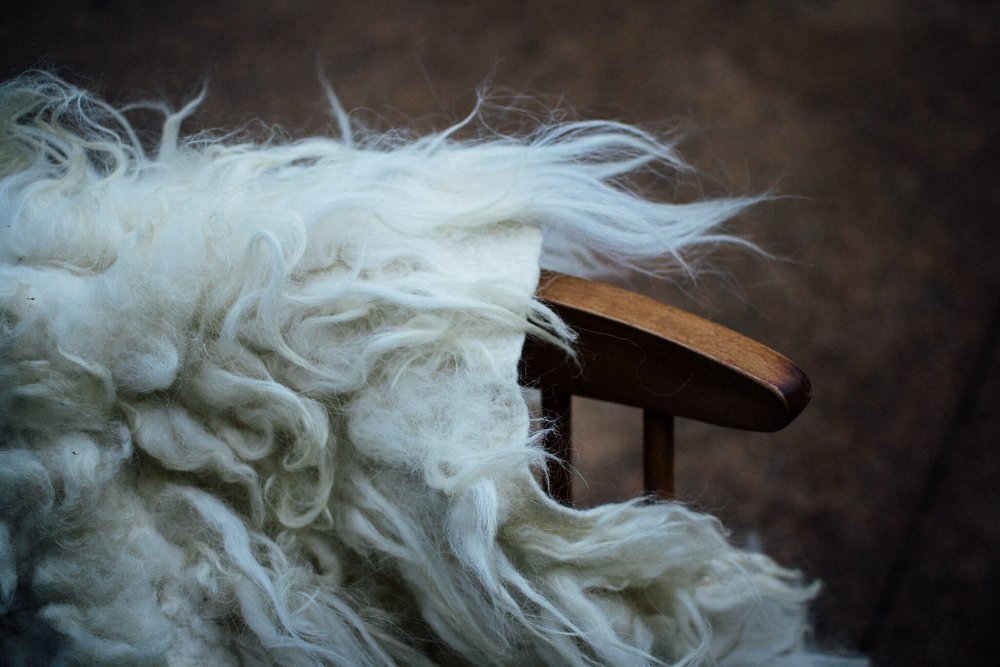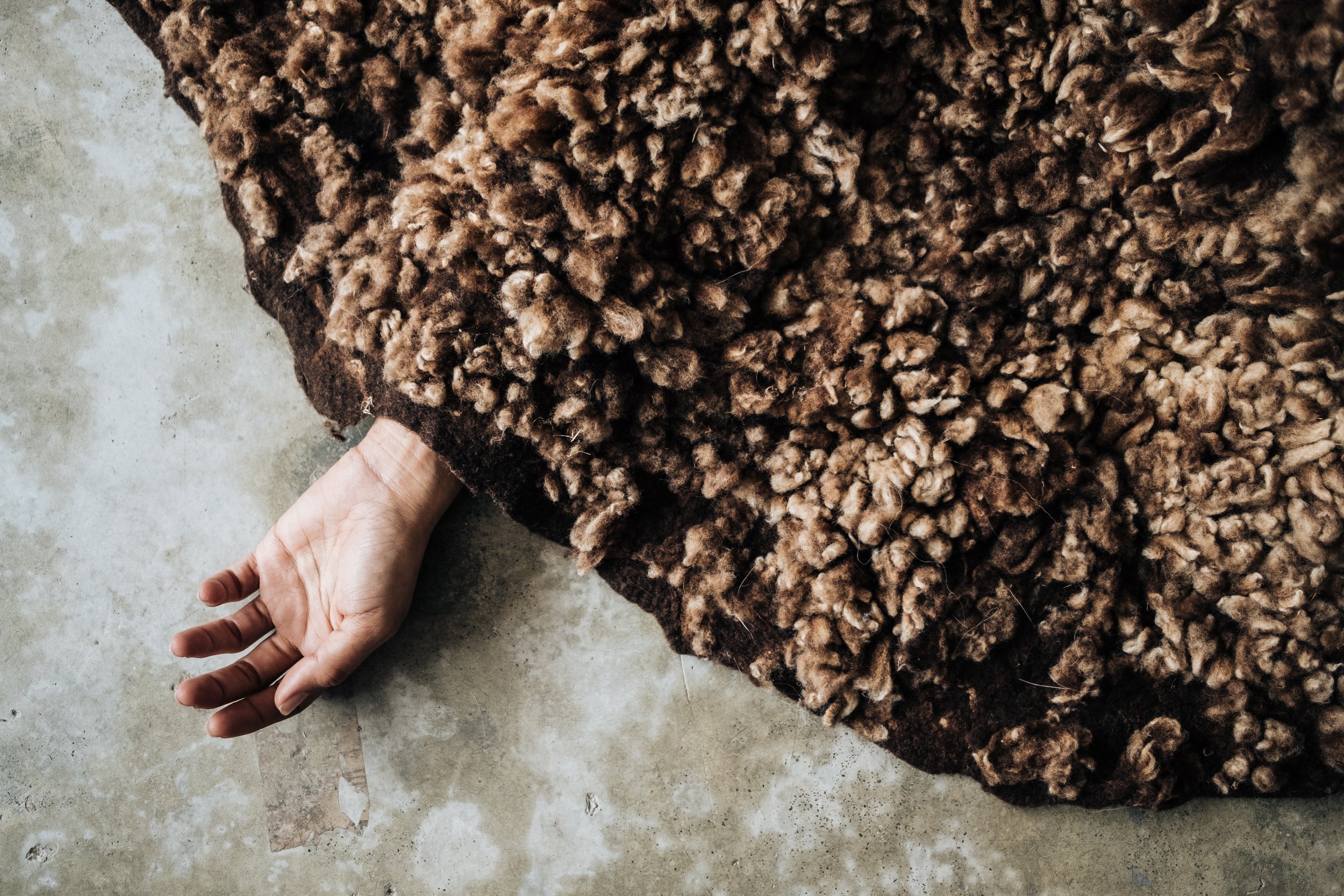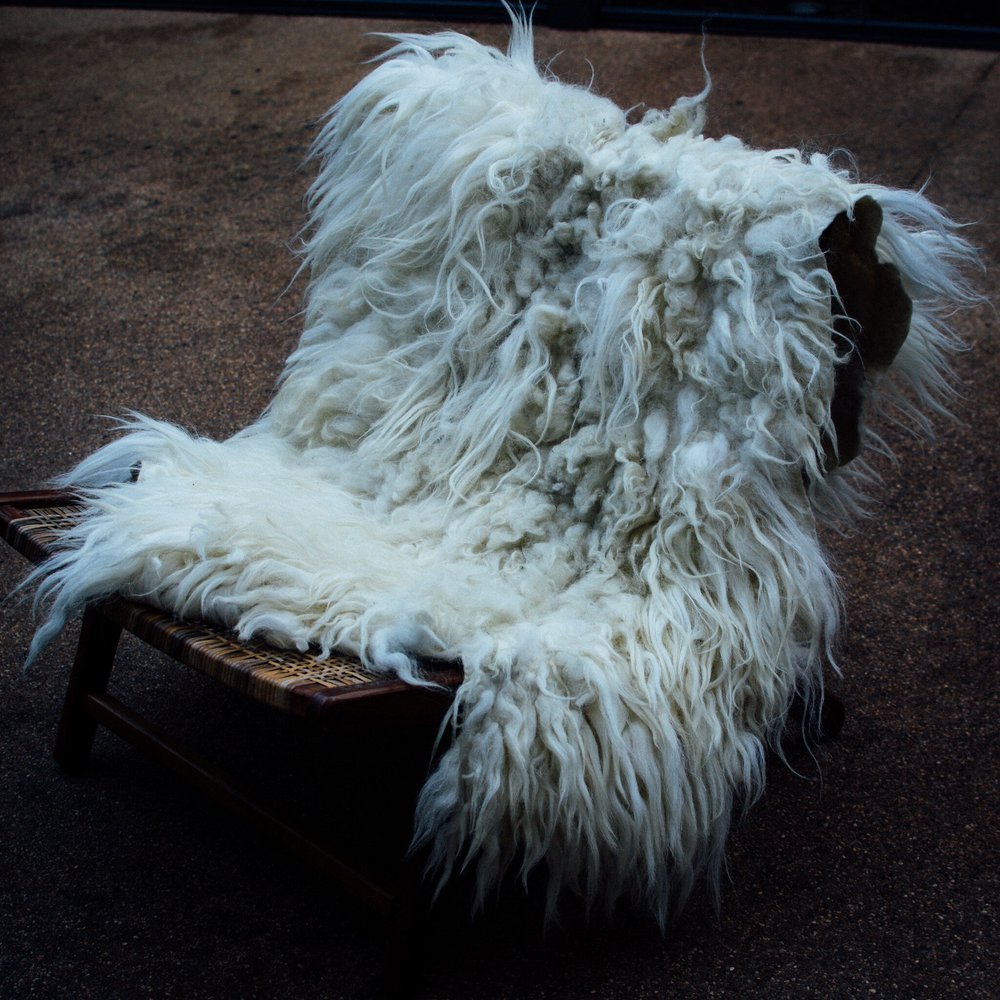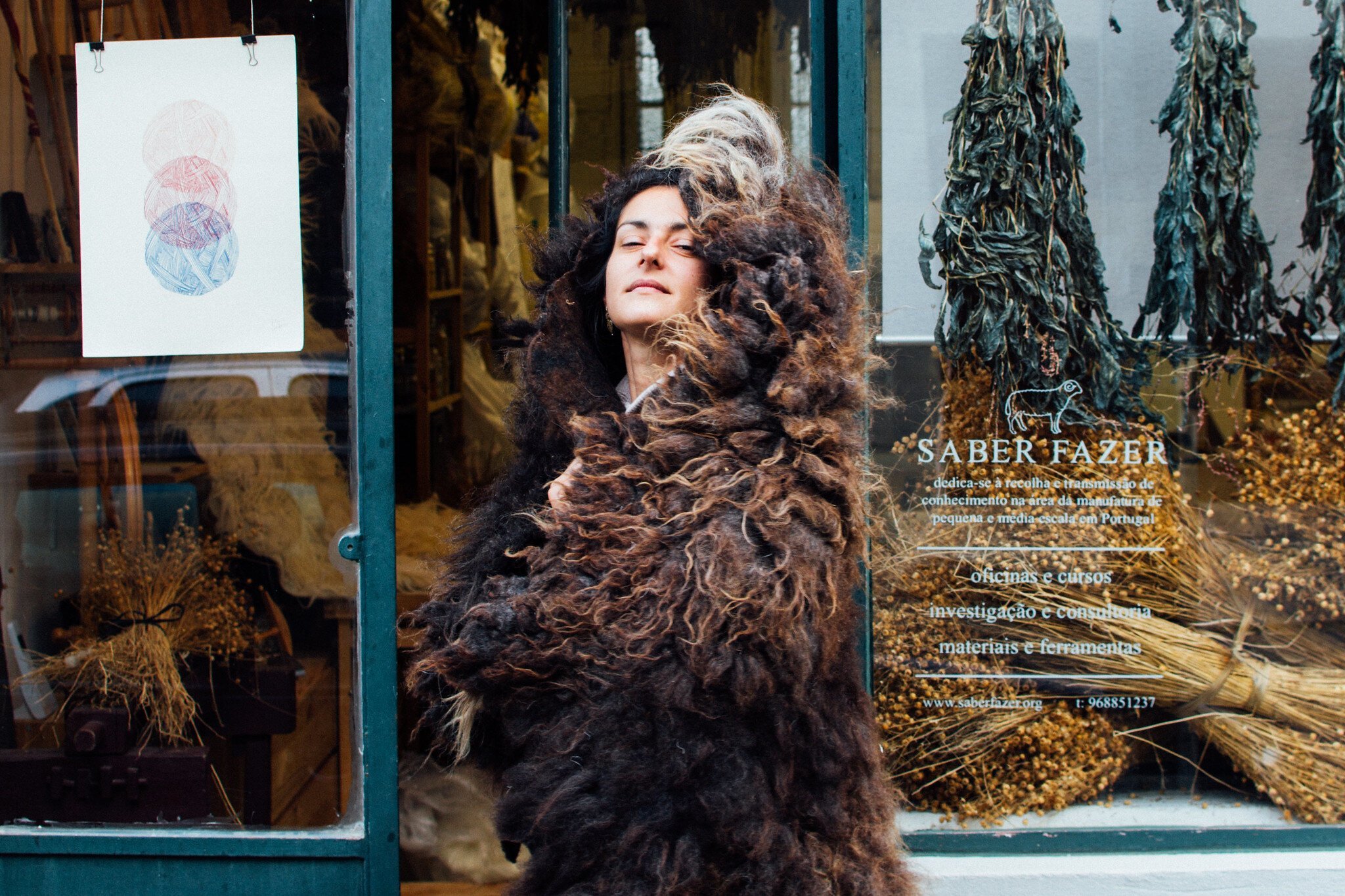A Pele do Lobo/
WolfSkin
Porto, fevereiro de 2020, para o Ofício.
A Pele do lobo é uma série de trabalhos sobre velos de raças autóctones que nasce da abordagem mais delicada à matéria-prima animal. Simultaneamente, é uma declaração de cuidado e carinho com a origem, uma técnica específica que observa ritmos próprios de fabricação e um conceito de busca artística. Nesta ordem, é um círculo perfeito no qual o contexto humano valoriza a matéria até a sua fonte, e a fonte responde tornando-se um objeto de valor.
Todas as peças finais resultam de um extenso processo colaborativo, desde o pastor à tosquia e seleção da lã, transformando-a em peça até ao seu último ‘habitat’. Como elos da cadeia deste processo colaborativo estão o Saber-Fazer, um projeto de formação e investigação na área da produção artesanal e semi-industrial em Portugal. O que garante a manutenção da melhor matéria-prima e seleciona os melhores velos. E o Ofício, agência de promoção do produto eloquente baseado em ciclos sensíveis, que quis que estas peças fizessem parte do seu catálogo.
Antes da tosquia, os cuidados começam com a atenção ao bem-estar do animal, sua correta criação e saúde. Ovelhas felizes dão a melhor lã. Os velos são tosquiados pelo Marty, de forma muito atenciosa e escolhidos a dedo por sua aparência e qualidade para o processo de feltragem crua. As lãs que escolho para feltrar são naturalmente as menos interessantes para a indústria da lã. São lãs de raça churra, primitiva e cujas fibras são grossas, longas, rústicas e difíceis de processar. Um desperdício nobre, como a quantidade de lã não aproveitada pela indústria e para a qual não existindo outro ciclo, é queimada, enterrada ou descartada de alguma forma.
O velo é feltrado, mantendo as características naturais do animal. Uma pelagem pura para lobos inocentes.
Materiais: Velo bruto autóctone, lã autóctone cardada.
Porto, fevereiro of 2020, for Ofício.
A Pele do lobo (WolfSkin) is a series of works on the indigenous fleeces born from the gentlest approach to an animal's raw material. At the same time, it is a declaration of care and affection for the origin, a specific technique that observes its own manufacturing rhythms and a concept of artistic search. In this order, it is a perfect circle in which the human context values matter all the way down to its source, and the source responds by becoming an object.
All the final pieces result from an extensive collaborative process, from the shepherd to shearing and selecting the wool, transforming it into an object until its last habitat. As links in the chain of this collaborative process are Saber-Fazer, an education and research project in the area of artisanal and semi-industrial production in Portugal. Which ensures the maintenance of the best raw material and selects the best fleeces. And Oficio, an agency promoting the eloquent product based on sensible cycles, who wanted these pieces to be part of its catalogue.
Before shearing, care begins with attention to the animal's well-being, its correct breeding and health. Happy sheep give the best wool. Fleeces are sheared by Marty in an attentive manner and handpicked for their appearance and quality for the raw felting process. The fleeces I choose to Felt are naturally the least interesting for the wool industry. These are churro sheep fleeces whose fibres are thick, long, rustic, and challenging to process. A noble waste, as the amount of wool not used by the industry and for which there is no other cycle, is burned, buried or discarded in another way or form.
The fleece is felted, keeping the animal's natural characteristics. A pure fleece for an innocent wolf.
Materials: Autochthonous raw fleeces, autochthonous carded wool.
